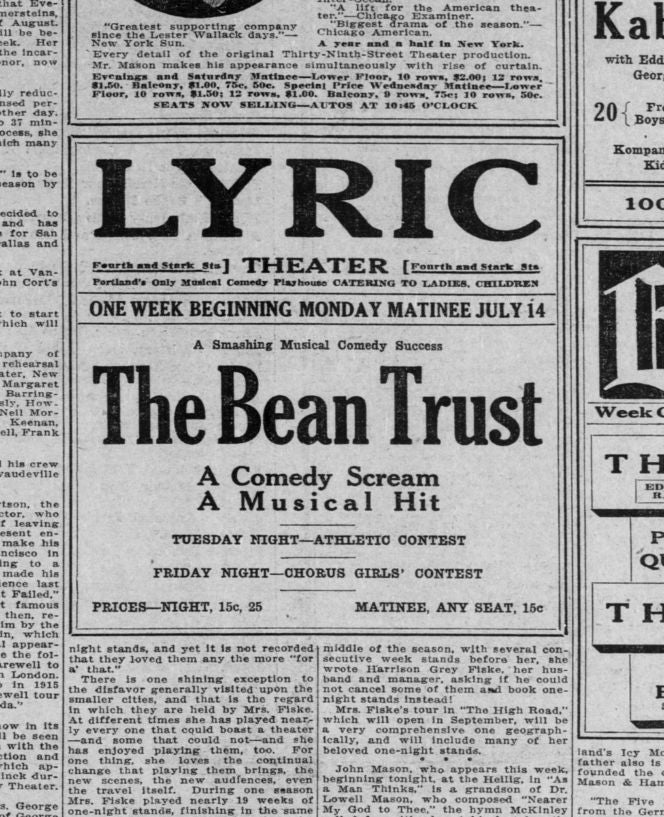
Retrieved from https://oregonnews.uoregon.edu/
As you can see in this ad for the Lyric theater in Portland, the theater is "Portland's Only Musical Comedy Playhouse CATERING TO LADIES, CHILDREN". In 1913, it was uncommon to cater to groups like these, as the expected patronage was men. Specifically, the audience were young men and the older "wage earners" of the time. Catering to these groups meant needing to have an increased sensitivity to content as opposed to what men of the time could see. Keep in mind, the sensibilities of 1913 were far removed from the ones that audiences have today. In James Labosier's article, From the Kinetoscope to the Nickelodeon: Motion Picture Presentation and Production in Portland, Oregon from 1894 to 1906, we see the implications that this kind of catering brought upon establishments, particularly the viewpoint of an owner: "...where did those children come from - the streets. Who lets them run there - their parents. If the parents ... care no more for their children than that, why should we. Shall we be more interested than their parents? We do not put a shotgun to their heads, they come in here and give us their money..."1. Amid popular protest of the exposure to material that children may be subjected to at such theaters, why should business owners drive away patronage from their theaters? Regardless, the police were charged with screening the content displayed and shutting down machines deemed to be showing inappropriate film.
Another interesting aspect of this ad is the admission price - 15 to 25 cents. Although the time of "nickel madness" had passed by a decade, the expectation was still to pay a nickel for a motion picture. These prices caused patrons to balk at the price increase. In Michael G. Aronson's article, The Wrong Kind of Nickel Madness: Pricing Problems for Pittsburgh Nickelodeons, an example is given with the East Liberty Regent: "...what was most striking about the Regent, what was deemed most worthy of the headlines in the Bulletin, was not its price tag or its architectural design or the quality of its musical accompaniment but its 'revolutionary and radical' new policy of charging ten and twenty cents a show..."2. These price increases were justified by the theaters of the day (such as the Lyric) providing more services than the average nickelodeon, thus straying away from "the sacred nickel" as an admission price.
Works Cited
1. Labosier, James. “From the Kinetoscope to the Nickelodeon: Motion Picture Presentation and Production in Portland, Oregon from 1894 to 1906.” Film History: An International Journal 16, no. 3 (2004): 286–323. https://doi.org/10.2979/fil.2004.16.3.286.
2. Aronson, Michael G. “The Wrong Kind of Nickel Madness: Pricing Problems for Pittsburgh Nickelodeons.” Cinema Journal 42, no. 1 (2002): 71–96. https://doi.org/10.1353/cj.2002.0019.